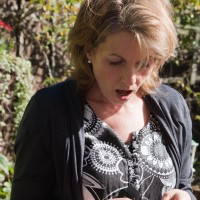
‘Getting something done, anything, which can then be iterated on is more important to me than hitting an intended vision.’ So said one of my friends in a conversation with me over the weekend. He’s a software developer and he subscribes to the ideal of ‘release early and release often’. For him, it’s better to get his project out there in a functional but imperfect state, and then work on refining it. I laughed and replied that that philosophy is utterly contrary to how I work, both as a photographer and a writer.
Whatever I do, I have to do it the very best of my capabilities every time, because once the shutter has clicked or the book has gone to print, there’s no going back. Whilst I’m convinced that I’ll never take the perfect photograph, it is what I strive for whenever I pick up my camera. I don’t think that there’d be any point in practising the craft of photography – or of calling myself a photographer – if I didn’t.
And if photography isn’t about the vision, then please do tell me what it is about, because I’ve been doing wrong for about 25 years.
My friend was astonished by my response. He genuinely believed that you can treat photographs as an iterative project. The specific example that he cited was concert photography. At which point I spluttered into my coffee and decided that I had to take things back a few steps and divide the craft of photography from its outcome.
The craft of photography, yes, that is iterative. But then, just about everything in life is iterative. You do something, you analyse it and identify what you did well and what you could have done better, you learn from it, and you apply what you learned next time. This approach is just as valid for photography as it is for baking a cake, acting a role, or doing the long jump. In striving for that elusive perfect photograph I need to build on my previous successes and failures and attempt to do it better every time.
The outcome, a photograph, is definitely not iterative. A photograph captures a single instant, a fleeting moment, and when it has gone, it’s gone. There is no going back. Try as hard as you might to recreate it, the light will be different, the atmosphere will have changed, the look will have passed. You have one shot, and it has to be the best you can make it. There’s no possibility of the release of an updated version that you can debug, patch holes, and clean up. It is definitely about hitting an intended vision.
And despite my friend’s beliefs, this is every bit as true for concert photography as for any other type of photography. You’ve three songs to condense the atmosphere, the energy, the look, into an image. All of what you can see, feel, and hear needs to be translated into a photograph. Then it’s done. Over. Finished. And the next concert that you go to will have a completely different feel, a different look, a different sense of presence, so you will have to do your very best all over again to encapsulate it in a picture.
No, there’s no beta in photography. You’ve one shot; it has to be the best that you can manage. Every time.
(Yeah, we probably all know this. But I needed to get this off of my chest.)





